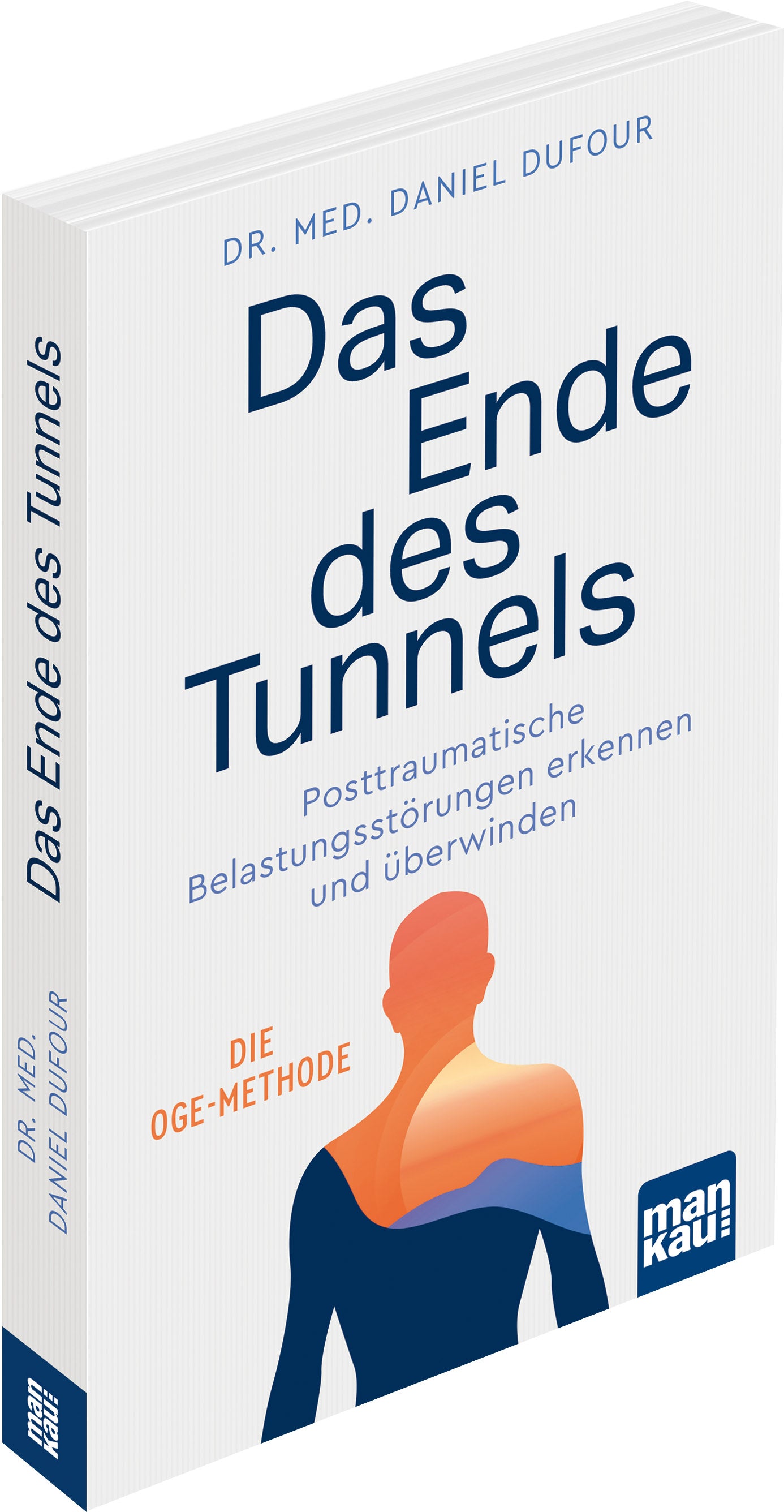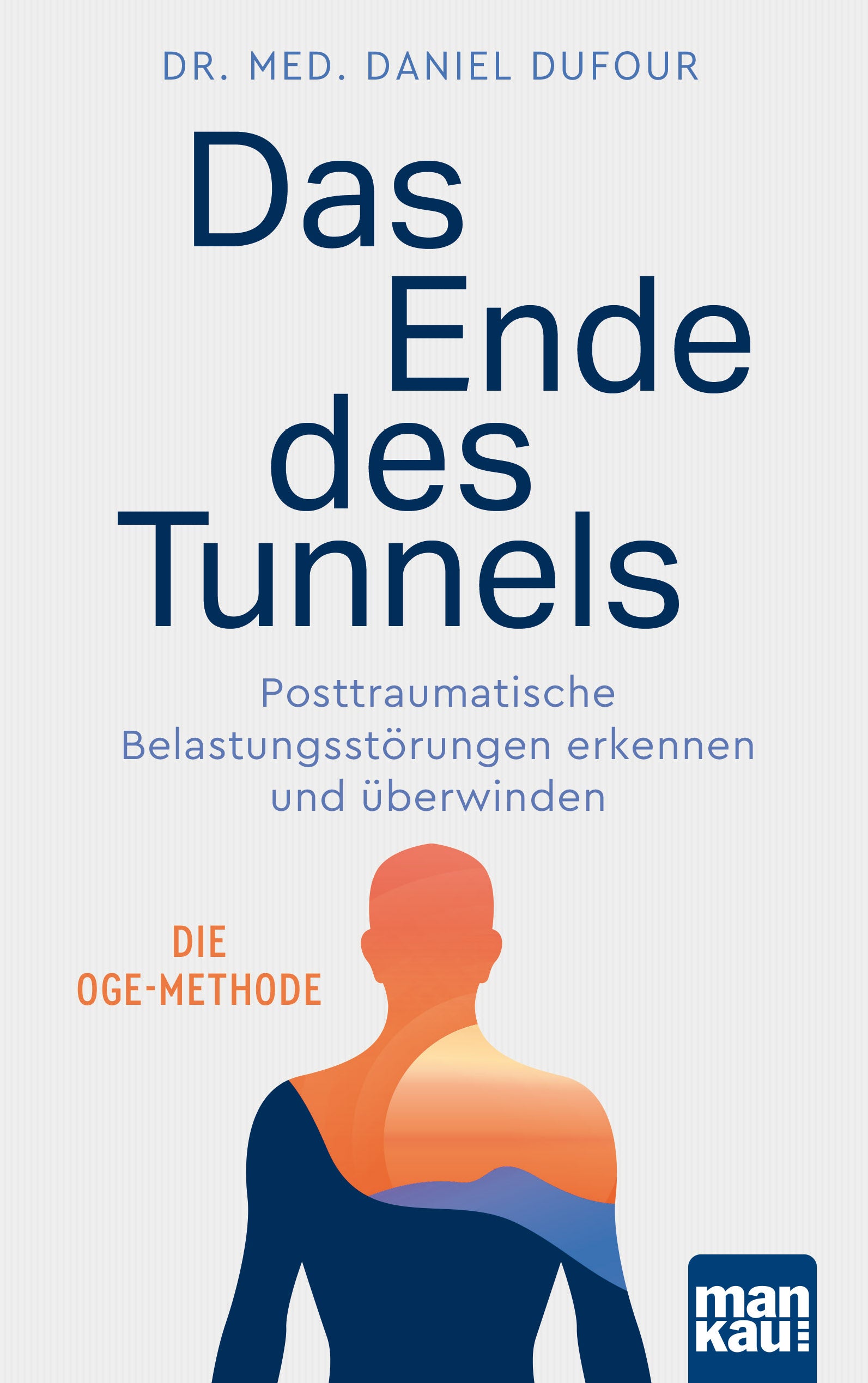

The end of the tunnel
Recognizing and overcoming post-traumatic stress disorder. The OGE method
Tax included. Shipping calculated at checkout
Sofort lieferbar: 1-3 Werktage
1st edition May 2019, paperback
13.5 x 21.5 cm, 190 pp.
ISBN-978-3-86374-493-9
It is ignored, underestimated and often not recognized: post-traumatic stress disorder (PTSD). And yet there are a large number of people affected: not only soldiers or refugees, but also "normal" people such as police officers, firefighters, victims of accidents, abuse or crime, nursing staff, doctors and disaster relief workers often suffer for years after extremely stressful experiences from recurring memories and feelings of helplessness and loss of control.
Dr. Daniel Dufour, the developer of the OGE method, experienced PTSD first hand as a military doctor and knows that the main cause is that the trauma is not treated appropriately and promptly! Conventional treatment methods blame the brain for the illness. But the real problem lies in the suppression of the stressful emotions experienced during the traumatic event; this repression blocks life energy and leads to serious secondary illnesses.
With the help of the OGE method, however, those affected can live out their painful feelings and release healing energies. If OGE is applied shortly after the trauma occurs, the method can prevent numerous effects of post-traumatic stress disorder and the threat of subsequent illnesses. The holistic approach makes it possible for those affected to get by without medication, to regain their autonomy and to lead a fulfilling life even after a traumatic experience - whatever the type.
- Who can be affected by PTSD? – Practical case studies
- How is PTSD treated? – Symptoms, causes and therapies
- How to overcome PTSD? – OGE method for prevention and healing
Note: The price fixing was lifted on November 10, 2022.
The OGE method according to Dr. med. Daniel Dufour
Daniel Dufour advocates a depth psychological approach. According to Dufour, the real problem with post-traumatic stress disorder (PTSD) lies in the suppression of the stressful emotions experienced during a traumatic event. Healing those affected using the OGE method takes place in three steps:
- Turn off the "ego" or the "thinking" that cuts us off from ourselves, from our present and from our emotions.
- Recognize, accept and live out your own emotions (sadness, anger, joy).
- Rediscovering yourself: rediscovering the knowledge of your own worth that you have had since birth and rediscovering your true essence.
Videos
Reviews
Additional info
PTSD can affect anyone
When most people think of post-traumatic stress disorder, they think of Afghanistan or the Vietnam War, but it can be lurking on our own doorstep. Here are some important facts:
-
PTSD occurs as a result of one or more traumatic experiences, such as being exposed to real danger with a high risk of injury, suffering a violent attack, or witnessing a death. In some cases, it is enough to witness a traumatic event or act of violence to develop PTSD. Or to hear about trauma suffered by people you feel close to.
-
Anyone who has had to go through traumatic experiences can be affected; it is just as common in adults as in children.
-
Even if those affected were cared for by a crisis team or other support groups immediately after the trauma they suffered, PTSD can still develop over the following months or even years.
-
Women have almost twice the risk of developing PTSD.
-
Professional groups that are confronted with suffering, violence and death are at increased risk of PTSD: police officers, firefighters, soldiers, paramedics, emergency doctors, nursing staff, employees of humanitarian aid organizations, bus drivers, train drivers and all employees in the justice and social services who have to deal with problems such as rape and abuse of which their clients are victims.
-
Refugees are also often affected by PTSD.
Recognizing PTSD
Posttraumatic stress disorder does not have a uniform clinical picture. Therefore, diagnosis is often not easy - the triggering trauma may have occurred years ago and the affected person may not even be aware of it. Here is some information to help you better recognize and classify PTSD:
-
After a traumatic event, there are two types of victims: some absorb the shock and, once it is over, return to their previous lives. Others suffer from more or less severe stress. Post-traumatic stress disorder occurs when the stress leads to suffering and/or the affected person can no longer cope in their social or professional environment or in other important areas of life.
-
The causes of PTSD are complex. There is no systematic approach. In fact, some people experience certain traumatic events without suffering any noticeable damage, while others suffer deeply.
-
The symptoms are divided into four main categories: remembering and reliving / avoidance behavior / affect flattening and blunting / hyperarousal.
-
The following abnormalities indicate PTSD: irritability or fits of anger, aggressive behavior, self-destructive or self-endangering behavior, hypervigilance, exaggerated startle reactions, difficulty concentrating, sleep disorders (excessive brain activity, frequent waking)
The OGE method according to Dr. med. Daniel Dufour
Daniel Dufour advocates a depth psychological approach. According to Dufour, the real problem with post-traumatic stress disorder (PTSD) lies in the suppression of the stressful emotions experienced during a traumatic event. Healing those affected using the OGE method takes place in three steps:
- Turn off the "ego" or the "thinking" that cuts us off from ourselves, from our present and from our emotions.
- Recognize, accept and live out your own emotions (sadness, anger, joy).
- Rediscovering yourself: rediscovering the knowledge of your own worth that you have had since birth and rediscovering your true essence.
Choose options







